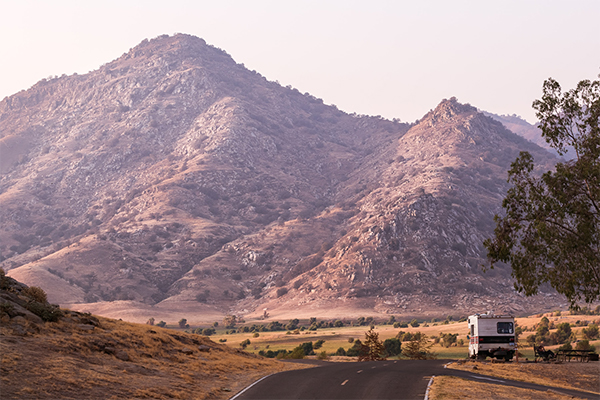How to Wild Camp in a Motorhome: A Guide for First-Timers
There’s something extremely satisfying about wild camping as a motorhome driver. If you’re new to the world of motorhomes and wild camping, don’t worry! Here is a list of what you need to know before embarking on your first wild campsite adventure.

The Gear You Need
RV campground. Because there is not much difference between these two types of campsites (typically). For your first wild campsite adventure, the first thing you will need is an RV campground. Be sure you have a reservation before you head to the park, but sometimes there’s still room. One thing you will notice about motorhomes is that there are a lot of different levels of travel-intentions. Not all of them may agree with you on whether you should be a “true” RV-er or not. Although many RV-ers are considered full-time RVer’s, there are a few people who are transient only. An example is when traveling the country and hopping from campground to campground. They will usually leave no trace, but you will not see them in the campground frequently.
Finding the Perfect Wild Camping Spot
Checking around online will give you a sense of where you can find nice wild campsites. With several years of exploring and camping in different areas, I have developed a good “to-do” list of where you can visit to get a first-hand look at different wild camping spots. If you want to practice first, you can learn from other motorhome drivers and campground owners. There is also an excellent resource called Camp Wild with over 15,000 user-contributed campgrounds in the United States, Canada, and Europe. Camp Wild covers many different areas of the United States, including camping, fishing, hunting, and everything in between. I’ve added quite a few good (and free) camping spots to my own map of wild camping areas around the United States.
Making Your Motorhome Comfortable for Wild Camping
Before heading out into the wild, take a look at what makes a motorhome a comfortable camper. Then make sure to pack up your motorhome in such a way that you can enjoy your destination. Obviously, you should only load up as many clothes as you need for the trip and think about swapping out those heavier bags and sofas if you want to enjoy your motorhome in a smaller, lighter one. However, make sure your tent and sleeping bag are secure in a big luggage bag and that your tent has enough room to stand up and walk around comfortably. Also, make sure that the flooring and walls are padded to protect your vehicle. Your mattress, bed and sofa should be made of heavy and dense, as well as, breathable material.
Make Sure You Have the Right Paperwork
We’ll start with the obvious. Don’t forget to bring along the vehicle papers. You should have the following: Driver’s license Motor Vehicle Record Card (MVR) Heavier vehicle registration Registration for trailers Basic shop costs Logbook of Title (LoT) for vehicle & trailer Section 106 declaration form Foreign license plate North Dakota Vehicle license plate Winterize Your Vehicle While you’re out getting the proper papers, you’ll want to check the weather forecast. Colder temperatures mean longer camping season, which means even more time to do wild camping. Don’t worry about the condition of your rig. If you park it outside, the weather will take care of it! Also, if it’s important to be on the road before winter, you should always check your tires, especially the front ones.
Prepare for Any Weather
Let’s start with the weather. Every wild camp adventure requires you to get an up-to-date weather report and to prepare for all possible weather conditions. Wear appropriate clothing and footwear. If you are going to be staying in bear country, be sure to tell people where you are going, the GPS coordinates, and don’t leave your food or gear out that could attract wildlife (especially bears). Remember: Always keep your food, food storage containers, grill, utensils, and sleeping bags inside your motorhome in a bear-proof container (if you don’t already have one, check out these kits for sale). Never pack food or other items into your vehicle and leave your “perimeter” unattended.
Leave No Trace
Before you even enter the wild, first check with a park ranger and National Park Service about how you can camp. They will tell you that you have to be on-site of the designated campground and follow the rules of being there. The rules are there to ensure that your stay at the campground is as peaceful as possible. “First, practice Leave No Trace. Making camp, building fires, removing trash and packing out waste are all practices the National Park Service recommends. For example, before your campsite, do the following: Maintain trash cans Fill them with sand Empty them daily Store all trash (including firewood) at least one-third a mile away from your campsite Read more about Leave No Trace from the National Park Service.